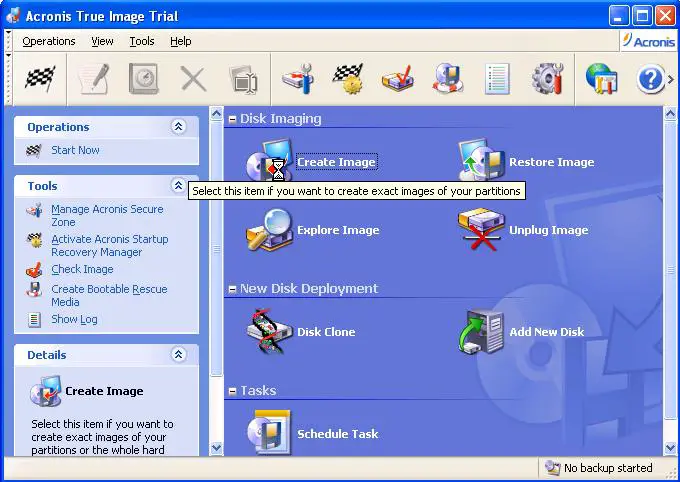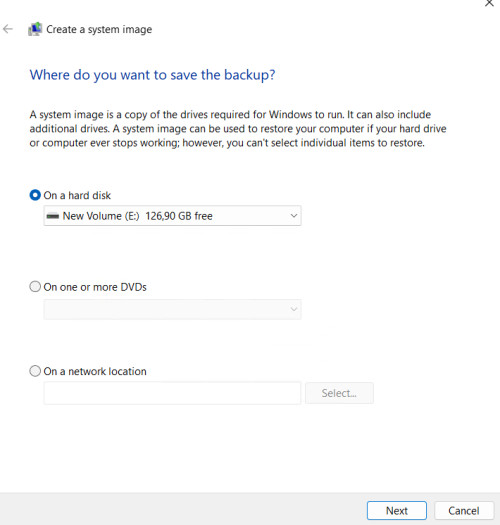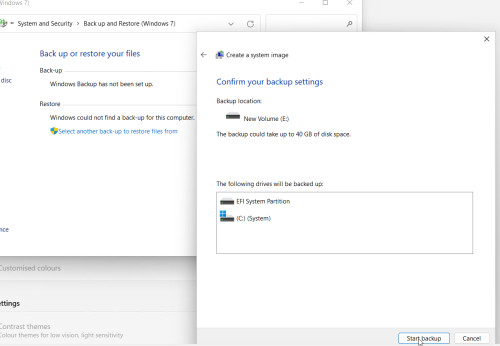Clone hard disk, copy, create image, tools

With cloning, the hard disk is copied 1:1 to another hard disk, without reinstallation. Thus, the existing installation can be transferred, for example, to a much faster SSD hard drive. In the case of hard disk errors it may be copied to a new hard drive before the PC finally refuses to serve.
To save time with new installations, it is also possible to create an image of the computer, this can be restored at any time if necessary. The PC is then very quickly functional again: with all installed programs. An image is a complete backup of the PC, see also: Backup Strategy.
Free or open source tools (mostly bootable Linux-based CD/DVDs) usually cannot clone a large hard disk to a smaller one, because they usually copy sector by sector. An exception to this are tools that are started from a running operating system, e.g. the Windows system image. The system image is part of Windows 10 and offers a built-in function to create hard disk images.
How a large hard disk can still be cloned to a smaller one is described here: Clonezilla: Clone a large hard drive to a smaller one.
Contrary to some articles on the Internet, cloning is not about mirroring hard disks. Mirroring refers to synchronous writing and reading from one hard drive to another.
Among other things, migrate hard disk is also used as a term for cloning.
Windows 10/11:integrated
Since Windows Vista, so also in Windows 10 and Windows 11, an image(system image)can be created from the hard disk to a network drive or a removable disk, such as a USB hard drive .The image can then be restored to the same or another hard disk using the setup CD / DVD or a system repair disk.
In Windows 10/11 under Backup and Restore Windows 7
If you do not have a Windows Setup DVD at hand, you can use Windows 10/11 Setup DVD, which can be downloaded as follows: Windows 10 - Download Installation DVD or USB Boot
Individual files of a system image backup can be extracted via Disk Management. See: Open system image.
Mirror hard disk
Windows could also be cloned via the possibility to mirror a hard disk. For this a mirror with a 2nd hard disk could be set up and the first hard disk could be removed afterwards. See: Mirror hard disk.
GNU/Linux based
Tools
dd
Probably the simplest, most versatile and most robust command to clone one hard disk to another is the Linux command: dd. (Disk Dump). Dd copies block by block from one disk to another, accordingly all, also unknown, file systems can be cloned with it: The only condition is that the target disk is at least the same size as the source disk. With dd I was recently able to move a Windows installation that wouldn't boot with other tools. For details on how to use it, see: dd.
Partimage
Partimage is a tool available for GNU/Linux which, unlike dd, only copies used blocks. The prerequisite is that it is a supported file system: ext2/ext3, xfs, ext4, btrfs, reiserfs-3, reiserfs-4, fat16/fat32, HPFS, JFS, UFS, HFS, NTFS.
Partimage can be installed in the known GNU/Linux distributions mostly via the package manager, at the example of Debian via the command: sudo apt install partimage
see: www.partimage.org/
Bootable: Live Linux
Clonezilla
Clonzilla is a bootable live Linux system which uses well-known GNU/Linux tools:
Partclone or even the already described tools dd and partimage, whereby Clonzilla can clone all imaginable file systems:
- GNU/Linux: ext2, ext3, ext4, reiserfs, reiser4, xfs, jfs, btrfs, f2fs and nilfs2 of GNU/Linux,
- Windows: FAT12 , FAT16, FAT32, NTFS;
- Mac OS: HFS+ ;
- FreeBSD, NetBSD, and OpenBSD: UFS ;
Minix: minix; - VMWare ESX: VMFS3 and VMFS5
For known file systems only the used blocks are cloned, unknown file systems have to be copied sector-by-sector using dd, which usually takes longer.
Clonezilla can clone by itself only to partitions of the same size or larger, unless the partitions are adjusted beforehand, see: Clonezilla: Clone large disk to a smaller one.
For simultaneous cloning to multiple PCs CloneZilla offers multicast support.
G4L - Ghost for Linux
G4L uses an adapted dd under the hood, which supports all file systems, but cloning is always sector-by-sector, so free sectors have to be cloned as well.
see, manufacturer: g4l.sourceforge.net/
g4u - Harddisk Image Cloning for PCs
Also, g4u copies sector-by-sector so that all file systems can be cloned as well
Manufacturer: www.feyrer.de/g4u
with costs
the classic: Acronis True Image
probably the most widely used image tool:

Features:
- clone disks, create images
- create images and restore while Windows is running
- Timing for automated backups
- create incremental backups (backup only data that has changed since the last backup)
- View backup logs
- Supports CD-R/CD-RW, ZIP®, Jaz® or other storage devices as well as many USB 1.0/2.0 and FireWire devices
- Manufacturer / Download: Acronis True Image 2015
how it all began: Norton Ghost - sales have been discontinued
The first and for a long time probably best known program for cloning a hard disk was Norton Ghost (now Symantec). The basic principle of Ghost is to copy a hard disk or partition in a switched off state. Ghost can read NTFS and thus clone a large partition or hard disk to a smaller one. With Ghost Explorer it is possible to open and edit image files. The Ghost Corporate Edition® is able to multicast over a network and can fuel several computers at the same time. With Ghost Walker the SID of a disk can be rewritten: so that each cloned machine is unique. (similar to NewSID)
Symantec's Norton Ghost as of version 9: PowerQuest has been taken over by Symantec, so a lot has changed in version 9 of Ghost. It now resembles DriveImage 7 in appearance.
Features:
- Clone hard disks, create images
- Backups can be started from Windows.
- Incremental backup (backup only data that has changed since the last backup)
- automatic scheduled backups -supports CDR/RW and DVD+-R/RW drives, USB and FireWire® (IEEE 1394) devices, as well as Zip® and Jaz® drives from Iomega®.
As an alternative to Norton Ghost, Symantec offers Symantec System Recovery.
Conclusion
For the creation of an image or the cloning of hard disks, the operating systems offer corresponding integrated tools. In Windows 10, an image can be created via the setting: Backup and Restore (Windows 7), and there is also the possibility of creating images or cloning hard disks completely independently of the operating system with corresponding Linux tools, i.e. also for Windows, for example: GNU/Linux-based.
 ({{pro_count}})
({{pro_count}})
{{percentage}} % positive
 ({{con_count}})
({{con_count}})


